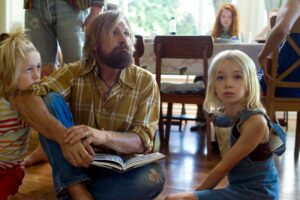Hi! This is Palme School. Today we are discussing the top 10 paintings in Russian artists. The history, subtext and details of Russian painting masterpieces below.
Let's go!
- The reading time is 5 minutes.
Black Square. Kazimir Malevich. 1915
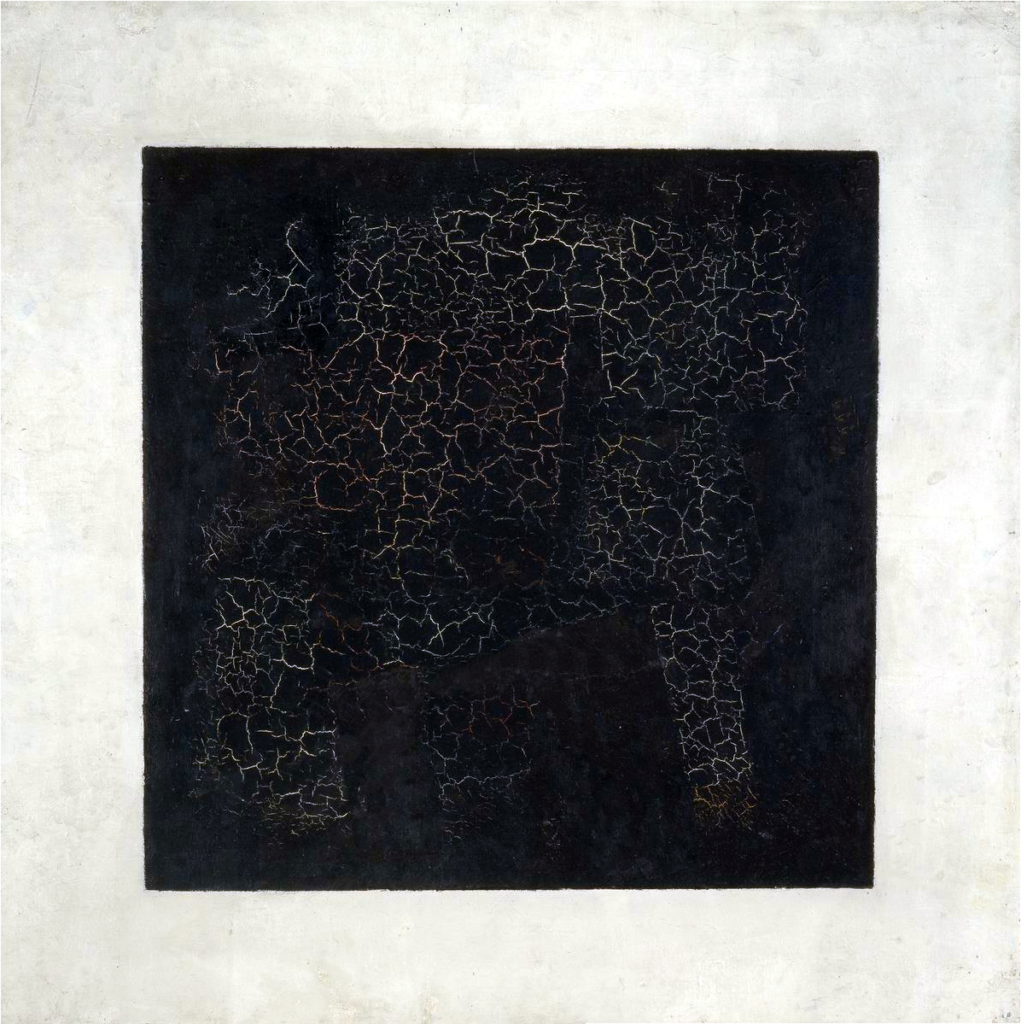
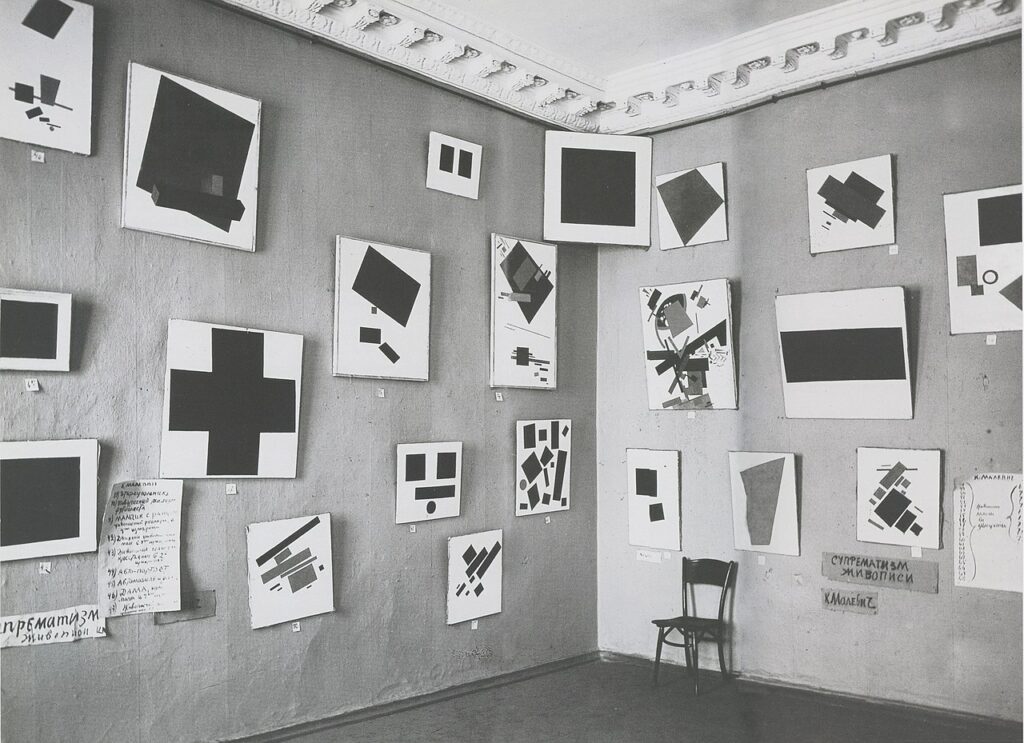

The painting is a classic avant-garde in Russia. Kvadrat was first exhibited at the futuristic exhibition "0.10".
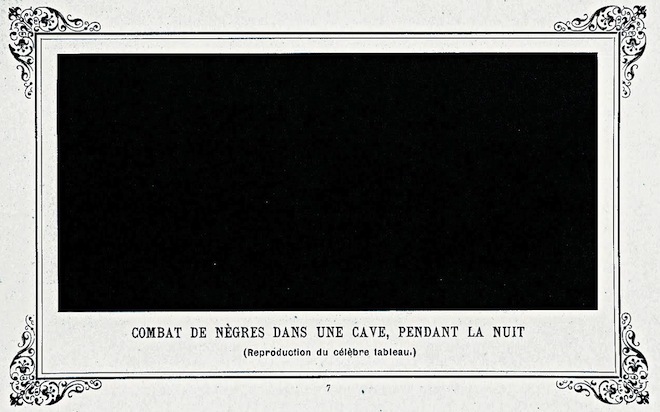

More importantly, it's not just a black square. The painting has several layers that have become visible through cracks in the paint. Tretyakov Gallery staff studied the layers of the painting in 2015 in honor of the centennial of the painting.
One of the layers is Malevich's own fingerprints, and the very first layer has some words on it, which is assumed to be a reference to the in a monochrome painting by Alphonse Allez. 1882.
Bogatyrs. Viktor Vasnetsov. 1898.
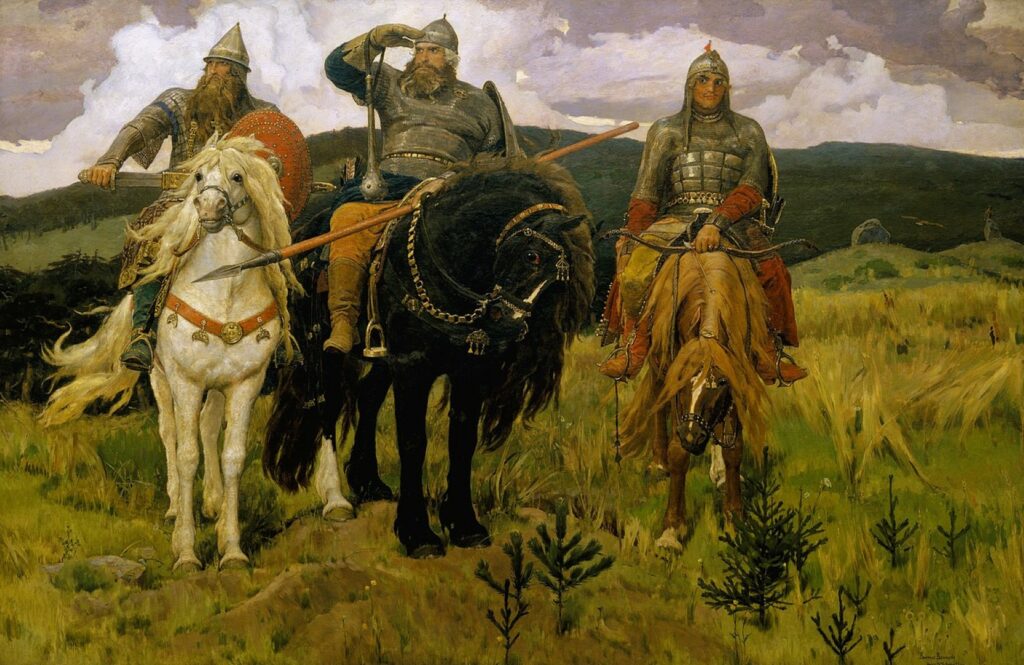

Vasnetsov worked on the painting for 17 years. The painting depicts three bogatyrs from Russian bylinas. Dobrynya Nikitich, Alyosha Popovich and Ilya Muromets.
The artist painted the picture from life, sketched the faces of several peasants. Interestingly, he searched for Ilya's "face" for the longest time and met him by chance on the street.
The Last Day of Pompeii. Karl Bryullov. 1833.


The painting measures 4.5 meters by 6.5 meters. The painting is about The eruption of Vesuviuswhich killed thousands of people from several Roman cities, Pompeii included. Bryullov visited the excavations of Pompeii in Naples in 1827 and this story made such a strong impression on the artist that he decided to write it. Work on the painting took 6 years. The painting was exhibited in Rome in the studio of Karl Bryullov and the whole city flocked to marvel at it.
The Ninth Shaft. Ivan Aivazovsky. 1850.
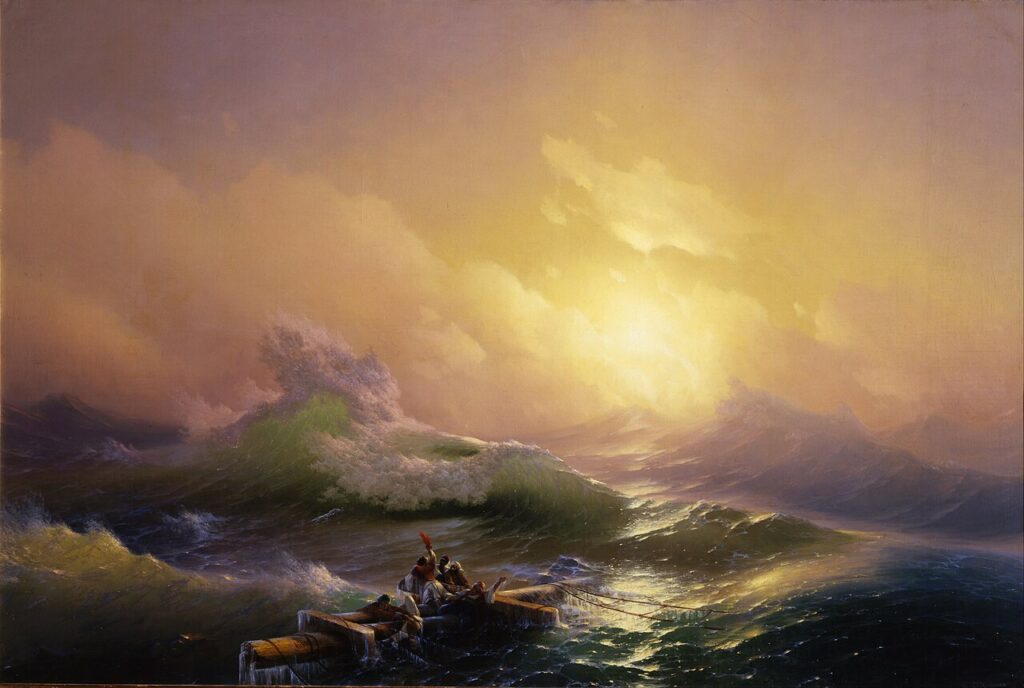

The ninth shaft - artistic image, a metaphor for the ninth and biggest wave, a symbol of fatal danger.
The Ninth Shaft is one of the most famous paintings by Aivazovsky, its size is 221x332 cm.
And despite the symbolism of evil doom, the painting glows with warm colors, the rising sun and the hope that the people on the raft will be saved.
Morning in a pine forest. Ivan Shishkin, Konstantin Savitsky. 1889.
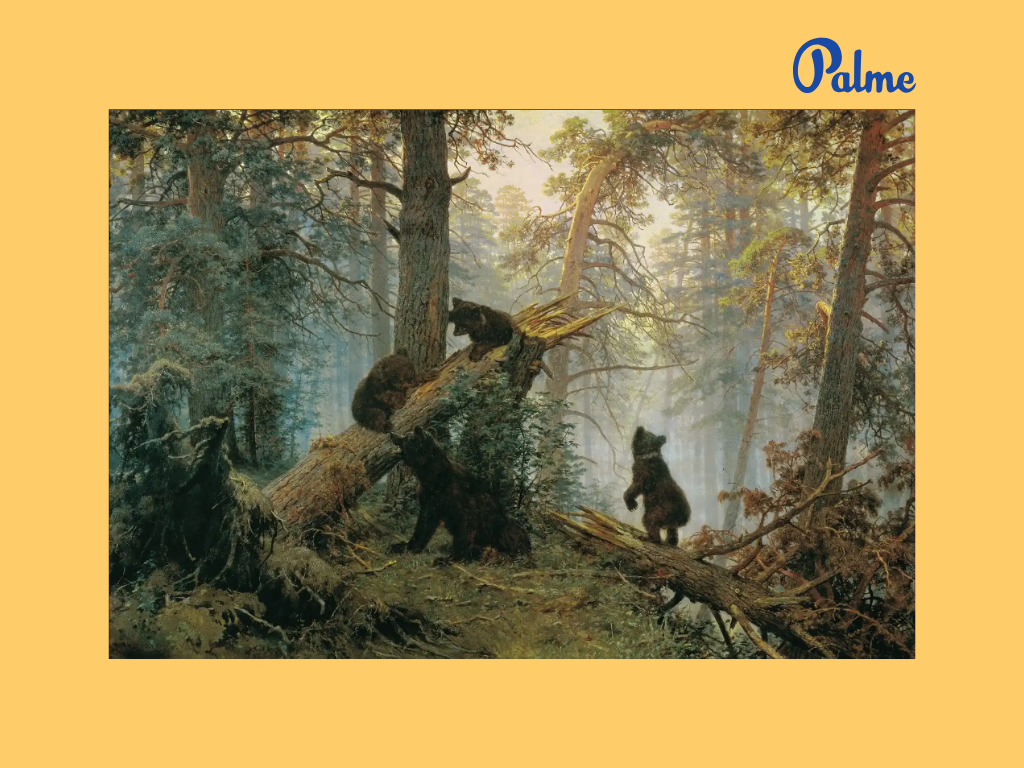

The artists coauthored the painting, and Tretyakov bought it for 4000 rubles for his collection. According to one version, 1000 rubles went to Savitsky and on the canvas his name was painted over. Because of what many are confused about the authors of this painting.
The picture is vividly used in mass culture: on candy wrappers, old postage stamps, and Russian literature textbooks.
Portrait of Pushkin. Orest Kiprensky. 1827.


The portrait itself is also on display in the Tretyakov Gallery, although any Russian-speaking schoolchild has seen it long before visiting the museum. The artist's work was commissioned by Pushkin's friend Anton Delvig. The portrait hung in his house until the death of Delvig himself, then the portrait was bought by Pushkin. Alexander Sergeevich posed for the painting for several months.
By the way, on Russian language classes at Palme School, the children go to the Tretyakov Gallery with Pushkin!
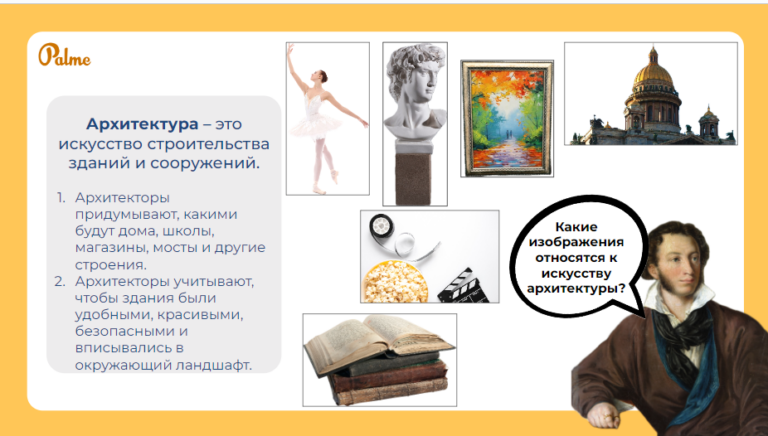

A girl with peaches. Valentin Serov. 1887.


The painting depicts 11-year-old Vera Mamontova. The idea for the painting came to Serov's mind when the girl ran into the house, holding a peach in her hand, and sat down at the table. The artist was 22 years old, and Vera posed for him every day for 2 whole months. The painting hung in the family home for a long time, and then was sold to Tretyakov.
Photo by Vera Mamontova.
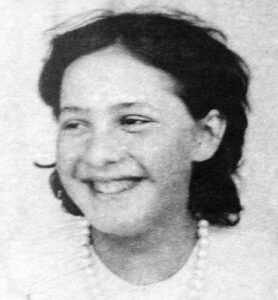

Apotheosis of War. Vasily Vereshchagin. 1871.
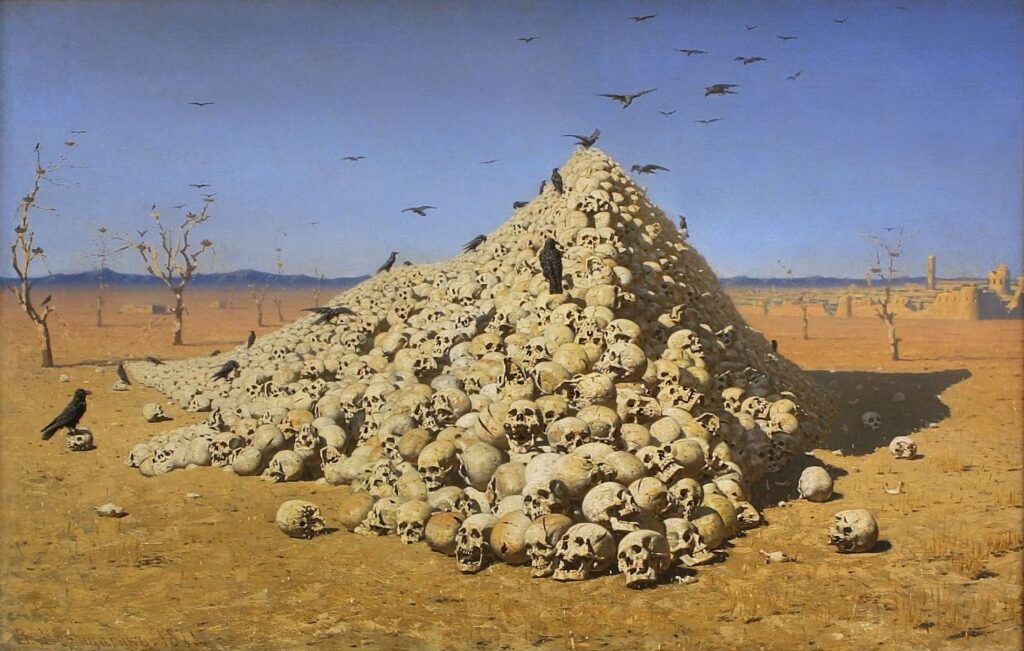

Vereshchagin began painting the picture after his second trip to Turkestan, in the 1860s, where he served as an ensign under Governor-General Kaufman.
The battle artist saw the fighting with his own eyes, and the painting "The Apotheosis of War" is written under the impressions of these stories.
Hunters in the camp. Vasily Perov. 1871.
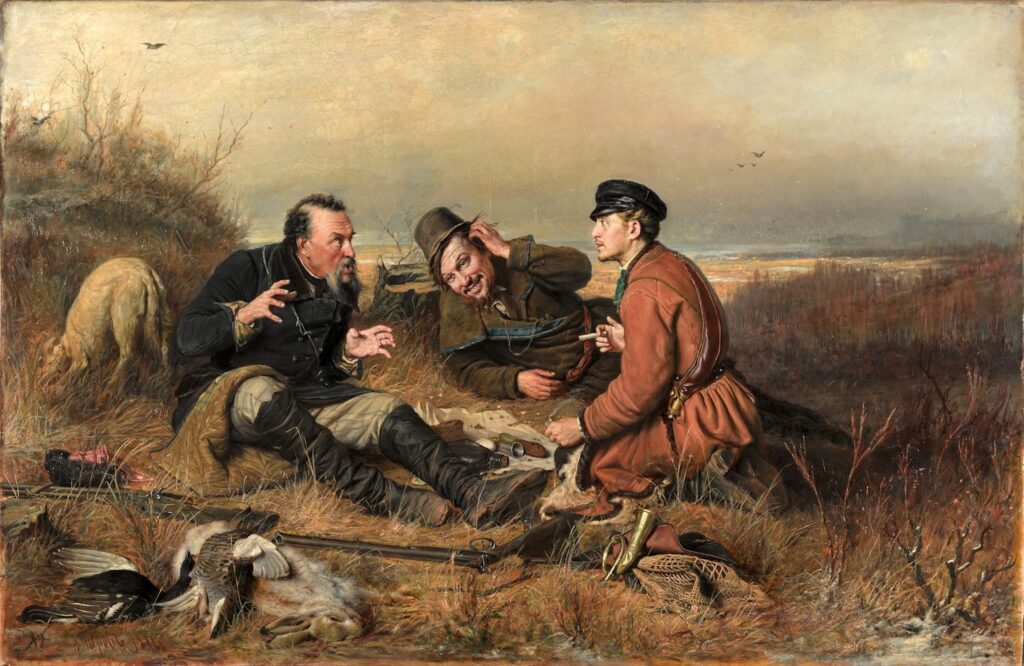

Perov is known as an artist who painted the complex and sometimes sad life of peasants, everyday scenes of life of ordinary people. Although "Hunters in the wilderness" was painted already at the sunset of this stage.
Perov himself was a hunter, so the theme was native to him. And in the painting he depicted his several friends: the doctor D.P.P
. Kuvshinnikov, the artist V.V. Bessonov another doctor N.M. Nagornov, who, incidentally, married the niece of L.N. Tolstoy.
Unequal marriage. Vasily Pukirev. 1862.
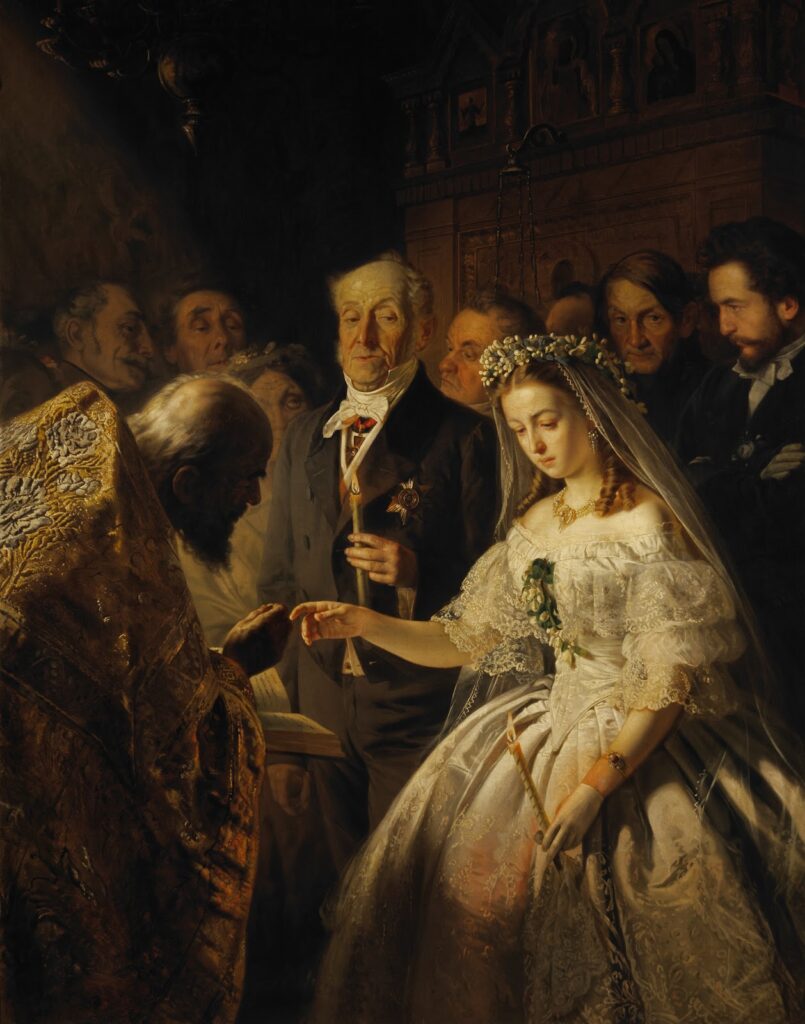

Pukirev painted the picture at a time when the issue of women's powerlessness in choosing a partner became acute and painful. And for painting the picture he was awarded the title of professor of the Imperial Academy of Arts.
In the painting itself, there are only two young people in the group of old men: the bride and the best man, both suffering. Critics consider the theory that Pukirev depicted himself as the best man, and the bride Praskovya Varentsova.



